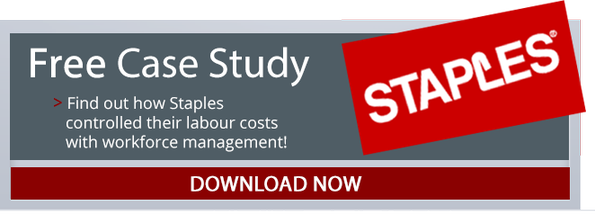 Once you've decided to transition to a workforce management solution, the next question is how exactly are you going to implement it? On-premise systems used to be the norm but today, cloud-based systems provide more flexibility and support for many small businesses. How will you choose? Consider these factors to determine which works for your business.
Once you've decided to transition to a workforce management solution, the next question is how exactly are you going to implement it? On-premise systems used to be the norm but today, cloud-based systems provide more flexibility and support for many small businesses. How will you choose? Consider these factors to determine which works for your business.
Cost
Most businesses put cost at the forefront of their minds when implementing new technology. A workforce management system is a commitment of time, money and resources; understanding the full cost of the endeavor is essential for system success. Even once you've chosen a workforce management system, cost can continue to come into play when determining whether to host that system on-site or through the cloud.
On-premise solutions require businesses to purchase and frequently upgrade equipment to ensure the system is working at its best. In addition, electricity costs can increase through running that equipment. While cloud-based solutions may seem cheaper, they also require additional bandwidth to ensure each employee can access the system seamlessly. Ultimately, cloud-based systems offer a cheaper, though not entirely cost-free, option for businesses.
Adaptability
Your business is unique and it's important to have your business systems reflect your individual needs. If you want to develop a workforce management system that is driven by your unique needs, determining whether you want on-premise or cloud may come into play.
While a cloud-based system has reduced costs, it also has reduced adaptability. A cloud-based system provides a basic framework for the system but in-depth customization isn't usually possible. An on-premise server allows IT employees to work with the "guts" of the machine to allow full customization of the system. With the right employees and the appropriate amount of space, an on-premise system may be the better choice for businesses that require in-depth access to the system.
Upkeep
Whether you're purchasing a new information system or a new register, upkeep is always a concern. Smart businesses purchase products that will not only increase their productivity, but stand the test of time. Upkeep is one factor to consider when determining whether to choose a cloud-based or on-premise workforce management system.
Cloud-based requires less upkeep by the business and significantly less resources. The system itself is housed and maintained by the company providing the service and besides ensuring acceptable bandwidth, the business has no obligation to ensuring that system's maintenance. An on-premise-system not only requires space for housing but also some degree of maintenance by the user. They need to ensure the equipment and the system is updated frequently. This additional time for maintenance can be the deciding factor when choosing a cloud-based or on-premise workforce management solution.
Speed
Many businesses struggle to keep pace with today's market. Consumers and businesses alike want 24-hour service from their businesses and running a business that meets that need is a challenge. When employees can't access information, business suffers. Having a responsive and instantaneous connection to your workforce management system is essential. While both on-premise and cloud-based systems offer high-speed access, an on-premise system is faster, regardless of bandwidth. If speed is a primary concern, it may be worth the space and expertise required with an on-premise workforce management system.
There are a variety of factors to consider when deciding between cloud and on-premise systems. For more adaptability and speed, an on-premise system may be the best bet. To reduce costs and expertise, a cloud-based system has clear benefits. Space, cost, and upkeep all need to be examined and considered by each individual business to determine what fits their needs.
